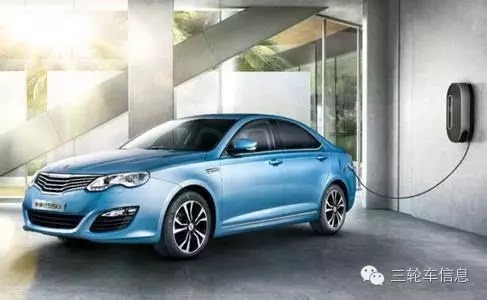
Impact 1: domestic new energy enterprises fall into battery dilemma
According to the statistics of China Automobile Industry Association, in 2015, the production and sales of new energy vehicles in China reached 340500 and 331100 respectively, ranking first in the world. In the first four months of this year, the cumulative production and sales of new energy vehicles in China reached 94400 and 90500 respectively, with a year-on-year increase of 126.8% and 131.1% respectively.
Since 2014, domestic new energy vehicles have entered a period of rapid development. For new energy products, their core technologies are battery, motor and electronic control, which account for more than 70% of the cost of electric vehicles. Domestic new energy vehicle enterprises rely heavily on foreign capital in these three aspects, especially batteries.
Industry insiders said that in order to create high-performance products, new energy vehicle enterprises choose high-quality batteries, and most of these batteries come from foreign-funded enterprises. However, these enterprises failed to enter the catalogue, which undoubtedly fell into an embarrassing situation for domestic new energy vehicle manufacturers.
However, it is also reported that the revised draft for comments will relax the restrictions on models on sale. If the catalogue has been obtained, a one-year adjustment time will be given,
However, it takes time to replace the battery products entered into the catalog. This is not a simple replacement of the battery. After replacing the battery, the performance of the whole vehicle should be verified again. Even if it passes the verification and re enters the market, whether the competitiveness of the product itself will decline, whether the sales opportunity has been missed, and whether consumers can accept it are all new problems faced by new energy vehicle enterprises.
In addition, it is still unknown whether the capacity of batteries that have been in short supply before, especially high-performance batteries, can keep up with the demand of the development of new energy vehicles. It is understood that at the beginning of capacity design, most domestic electric vehicle enterprises had only one production line in production, considering that the domestic market needed a long time to cultivate. In addition, new energy power batteries have high requirements for products, and enterprises need a period of time in material selection and production. Therefore, according to its prediction, the fastest time for domestic lithium power batteries to achieve a balance between supply and demand is 2017.
Impact 2: foreign capital competition in domestic battery industry
It is understood that power battery is the core technology of new energy vehicles, accounting for about 50% of the cost of new energy vehicles. Therefore, how to support domestic advantageous battery enterprises is related to the autonomy of China's new energy vehicle industry and the cost control of new energy vehicles.
For enterprises that have entered the catalogue, the standard means that they have obtained a pass technically. In the future, this standard is also an important reference basis for automobile enterprises to select suppliers. The analysis shows that this can reduce the promotion cost of battery enterprises. At the same time, enterprises will continue to improve their technical level in order to meet the normative conditions. From the long-term development of the industry, it is good.
Insiders pointed out that if foreign battery brands want to enter the catalogue, they should not only meet the product technical indicators, but also meet the requirements of building joint venture factories in China. However, this will involve a lot of approval work and a long cycle. Considering that the rhythm of product launch will be affected, vehicle enterprises may reduce the demand for foreign-funded power batteries. Therefore, the new national standard is conducive to the development of domestic battery enterprises.
However, as mentioned above, it takes time to switch products and improve production capacity. Therefore, the introduction of policies needs to set aside a buffer period to support the development of the domestic battery industry step by step.
It is worth affirming that at present, the power lithium battery industry has formed a competitive pattern of China, South Korea and Japan, and the output of the three countries accounts for more than 90% of the total global output. However, the technical level of battery production in China still lags behind that of Japan and South Korea, and there are only a few enterprises that can really produce high-quality products. At present, only BYD can compete with foreign giants in the technical route of lithium iron phosphate.
However, it should be noted that as more and more battery enterprises, especially foreign-funded battery enterprises, enter the catalogue, domestic batteries will still face fierce market competition, and enterprises with core technology and capital scale advantages will get more opportunities. On the contrary, small enterprises with poor production capacity and low product quality may also be merged, reorganized or eliminated.
Previous One : Micro electric vehicles are more mainstream than mainstream electric vehicles
Online message